PHOTO GALLERY - from site www.cactuspro.com
prepared by Peter Lapshin
translation from Russian by editor
Dear readers of our e-magazine!
In this issue we continue to publish photos of anomalous succulents. The Internet with each day becomes all the richman miscellaneous resources. Today we present to our readers a site www.cactuspro.com, on which one a great many of excellent photos of fine succulent plants. For this page we have selected only anomalous plants, according to subjects of our e-magazin. We hope, that this selection will please the judges of beauty of succulent plants.
The previous issues of the Photo Gallery were dedicated to the unusual forms of cacti and succulents from genera:
Hybrided Gasteria and Haworthia (#39),
Crested Opuntia (#39),
Crested Saguaro (#38),
Astrophytum cultivars (#38),
'Holland' plants (#37),
Cotyledon, Kalanchoe (#36),
Agave (#35),
Echeveria (#34),
Astrophytum (#34),
extraordinary plants from collection Shmuel Matityahu: cacti and succulents,
succulent compositions (#32),
Euphorbia millii (#32),
?denium (#32),
Aeonium (#30),
Haworthia (#30),
Turbinicarpus (#29),
Cereus (#27 ? #28),
Rebutia (#26),
Ariocarpus (#25),
Gymnocalycium (#22, #23),
Astrophytum (#18).

Photo 1.
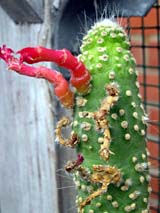
Photo 2.
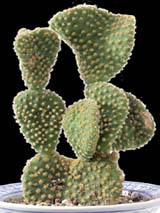
Photo 3.
| | |
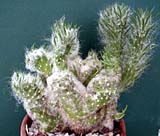
Photo 13.
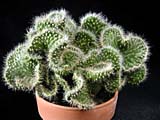
Photo 14.
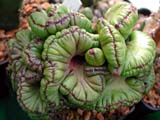
Photo 15.
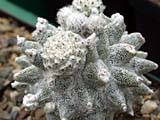
Photo 16.
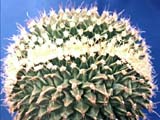
Photo 17.
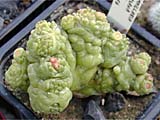
Photo 18.
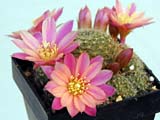
Photo 19.
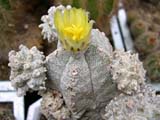
Photo 20.
| | | | | | | |
Photo 1. Eulychnia castanea v. varispiralis (link).
Photo 2. Cleistocactus strausii f. monstruosus (link).
Photo 3. From a crested Opuntia - Opuntia microdasys - is most widespread (link).
Photo 4. Flowering Austrocyllindropuntia (Maihueniopsis) clavarioides is infrequent event (link).
Photo 5. Astrophytum asterias f. cristata (link).
Photo 6. Crested Mammillaria theresae (link).
Photo 8. Sulcorebutia frankiana v. aureispina f. cristata (link).
Photo 9. Astrophytum asterias f. variegata (link).
Photo 10. Chamaelobivia silvestrii v. crassicaule f. cristata (link).
Photo 11. Gymnocalycium eurypleurum (link).
Photo 12. Frailea pygmaea v. globosa (link).
Photo 13. Austrocylindropuntia vestita f. cristata (link).
Photo 14. Austrocylindropuntia cylindrica f. cristata (link).
Photo 15. Mammillaria bocasana cv. Fred f. cristata (link).
Photo 16. Astrophytum myriostigma cv. Lotusland (link).
Photo 17. Obregonia denegrii f. cristata (link).
Photo 18. Mammillaria bocasana cv. Fred (link).
Photo 19. We well-known the development of plants chimeras as a disturbance of synthesizing of chlorophylle by separate tissues of a stalk (or leaves), as a result of which leaves (or a stalks) become variegated. But difference of tissues can be not only on genes of synthesizing chlorophylle, but also on any other genes, for example on colouring of lobes, as for Rebutia on this photo (link).
Photo 20. Astrophytum myriostigma cv. Lotusland also demonstrates, that for it "not all is clean" from the point of chimeras of its tissues. In this case main stalk looks quite usually, but have a not usually for Astrophytums branching (link).
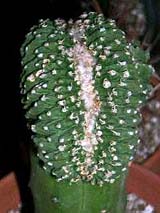
Photo 21.
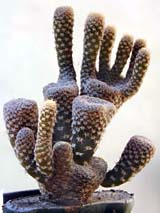
Photo 22.
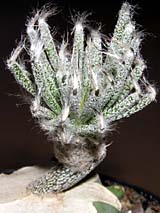
Photo 23.
| | |
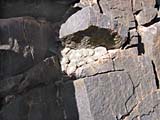
Photo 24.
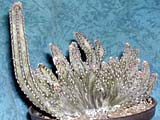
Photo 25.

Photo 26.
| | |
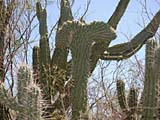
Photo 27.
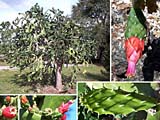
Photo 28.
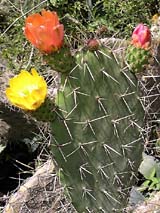
Photo 29.

Photo 30.

Photo 31.

Photo 32.
| | | | | |
Photo 21. Aztekium ritteri f. cristata (link).
Photo 22. Is always looked completely unusually Austrocyllindropuntia (Maihueniopsis) clavarioides (link).
Photo 23. Young Digitostigma (Astrophytum) caput-medusae (link).
Photo 24. Cacti in a crevasse of a rock: Blossfeldia liliputana (link).
Photo 25. Monvillea spigazzinii f. cristata (link).
Photo 26. Astrophytum myriostigma cv. Onzuka (link).
Photo 27. Cristata in the nature: Stetsonia coryne criste - S500 (link).
Photo 28. So should look decent Opuntia in an adult condition - Opuntia cochenillifera (link). Also this photo - example of good processing of photos for the publication in the Internet.
Photo 29. One more plant with multi-coloured flowers. This time is Opuntia soederstromiana (link).
Photo 30. Melocactus intortus, probably, tested any problem during growth, reshapes new lateral vegetative stalks in a top of a body near cephaly (link).
Photo 31. Group of Melocactus intortus with a multiple cephalyes and lateral stalks (link).
Photo 32. Epithelantha f. cristata (link).





